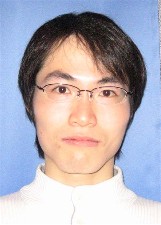Org. Synth. 2007, 84, 285
DOI: 10.15227/orgsyn.084.0285
SYNTHESIS OF MULTI-FUNCTIONALIZED KETONES THROUGH THE FUKUYAMA COUPLING REACTION CATALYZED BY PEARLMAN'S CATALYST: PREPARATION OF ETHYL 6-OXOTRIDECANOATE
[Tridecanoic acid, 6-oxo-, ethyl ester]
Submitted by Yoshikazu Mori and Masahiko Seki
1.
Checked by Naohiro Aoyama and Masakatsu Shibasaki.
1. Procedure
Caution! All reactions should be conducted in a well-ventilated hood because of the stench of EtSH.
A. S-Ethyl Octanethioate (1). A 200-mL, three-necked, round-bottomed flask equipped with a rubber septum, a thermometer, a three-way stopcock connected to an argon balloon (Note 1), and a Teflon-coated magnetic stirring bar is charged with octanoic acid (Note 2) (7.50 g, 52.0 mmol) by a pipette. After being purged with argon in the flask, acetonitrile (CH3CN) (Note 2) (80 mL) is added by using a measuring cylinder with temporary removal of the septum, while keeping a positive flow of argon. The flask is immersed in an ice-water bath. N,N-Dimethylaminopyridine (DMAP) (Note 2) (0.60 g, 4.9 mmol) and 1-ethyl-3-(3-dimethylaminopropyl)carbodiimide hydrochloride (EDC) (Note 3) (10.0 g, 52.2 mmol) are added successively to the solution while the temperature is kept below 10 °C. The mixture is stirred below 10 °C for 10 min and ethanethiol (EtSH) (Note 2) (3.9 mL, 53 mmol) is added via syringe. The ice-water bath is removed and the mixture is stirred at 25 °C for 22 h (Note 4). The mixture is evaporated (Note 5). The residue is partitioned after adding ethyl acetate (50 mL) and 3.5 % hydrochloric acid (HCl) (50 mL). The organic layer is successively washed with water (50 mL), saturated aqueous sodium hydrogen carbonate (50 mL) and water (50 mL). The organic layer is dried over anhydrous magnesium sulfate (MgSO4) (5.0 g) and filtered. The solid MgSO4 is washed with ethyl acetate (40 mL). The filtrate and the washings are combined and evaporated. The crude material obtained as the residue is purified by column chromatography with a 5-cm diameter column containing 200 g of silica gel (Note 6). The column is eluted with a mixture of hexanes and ethyl acetate (20:1) to give 9.44–9.49 g (50.1–50.4 mmol, 96–97 %) of 1 as a colorless oil (Note 7).
B. 5-Ethoxy-5-oxopentylzinc iodide (2). A 100-mL, three-necked, round-bottomed flask is equipped with a reflux condenser (fitted with a three-way stopcock connected to an argon balloon), a thermometer, a rubber septum, and a Teflon-coated magnetic stirring bar. After the apparatus is purged with argon gas, the flask is charged with zinc powder (7.09 g, 108 mmol) (Note 8) with temporary removal of the septum, while keeping a positive flow of argon and anhydrous tetrahydrofuran (THF) (16 mL) (Note 9) via syringe under an argon atmosphere. 1,2-Dibromoethane (240 μL, 2.79 mmol) (Note 10) is added to the stirred suspension via syringe and the mixture is heated to 65 °C and kept at 65 °C for 3 min (Note 11). After cooling the mixture to 25 °C, chlorotrimethylsilane (TMS-Cl; 240 μL, 1.88 mmol) (Note 12) is added via syringe and the slurry is stirred for 15 min at 25 °C (Note 13). The mixture is warmed up to 55–60 °C using an oil bath. Ethyl 5-iodopentanoate (13.8 g, 53.9 mmol) (Note 14) is added to the mixture at 55–60 °C over 90 min via syringe with vigorous stirring (Note 15). The mixture is stirred at 55–60 °C for 30 min and the oil bath is removed. The reaction mixture is allowed to cool to 30–35 °C to give 2 (Note 16). The suspension is used for the subsequent step without further purification.
C. Ethyl 6-Oxotridecanoate (3). To the mixture obtained above are added at 30–35 °C, under an argon atmosphere, S-ethyl octanethioate (5.04 g, 26.8 mmol) and anhydrous toluene (16 mL) (Note 17) via syringe, Pearlman's catalyst (5% palladium(II) hydroxide on activated carbon) (345 mg, 0.162 mmol) (Note 18) with temporary removal of the septum, while keeping a positive flow of argon and anhydrous N,N-dimethylformamide (DMF) (2 mL, 25.8 mmol) (Note 17) via syringe. An initial exotherm (from 30–35 °C to approximately 45 °C) is observed. The mixture is stirred at 25 °C for 14 h (Note 19). The reaction mixture is cooled to 5 °C, and 3 M HCl (30 mL) is added to the mixture keeping the temperature below 25 °C (Note 20). The reaction mixture is stirred at 25 °C for 30 min and is filtered. The filtrate is partitioned after addition of ethyl acetate (120 mL). The organic layer is washed with water (60 mL × 2) and dried over anhydrous MgSO4 (6 g). The mixture is filtered and the MgSO4 is washed with ethyl acetate (45 mL). The filtrate and the washings are combined and evaporated to afford 10.2 g of yellow oil (Note 21). The crude material is purified by chromatography on a 5-cm diameter column containing 200 g of silica gel (Note 6). The column is eluted with a mixture of hexanse and ethyl acetate (15:1) to give 5.35 g (20.9 mmol, 78 %) of 3 as a pale yellow oil (Note 22).
2. Notes
1.
The submitters performed the reaction under a nitrogen atmosphere.
2.
Octanoic acid, acetonitrile, DMAP, and EtSH were purchased from Aldrich Chemical Company, Inc., and used as received.
3.
EDC was purchased from Mitsubishi Tanabe Pharma Corp., Fine Chemicals Department and used as received
4.
The conversion of the reaction was monitored by TLC (hexanes/ethyl acetate = 8:1, phosphomolybdic acid was used as stain, silica gel was used as stationary phase, octanoic acid: R
f = 0.2, product (
S-ethyl octanethioate): R
f = 0.85.
5.
Checkers conducted the evaporation at 50 °C under approximately 30 mmHg. In order to control the odor, the vapor output from evaporator was passed through a trap cooled at −78 °C by dry ice-acetone bath.
6.
Silica gel 60, particle size 230–400 mesh ASTM, Merck Ltd. was used.
7.
The physical properties of the product were as follows:
1H NMR
pdf (500 MHz, CDCl
3) δ: 0.88 (t, 3 H,
J = 7.1 Hz), 1.34–1.21 (m, 11 H), 1.69–1.62 (m, 2 H), 2.55–2.51 (m, 2 H), 2.87 (q, 2 H,
J = 7.4 Hz);
13C NMR
pdf (125 MHz, CDCl
3) δ: 14.0, 14.8, 22.6, 23.2, 25.7, 28.9, 28.9, 31.6, 44.1, 199.8; IR (neat): 2928, 2857, 1692 cm
−1; MS (ESI)
m/z 211 [M + Na]
+. HRMS (EI)
m/z [M-SEt]
+: Calcd for C
8H
15O, 127.1117; Found, 127.1119. Anal. Calcd for C
10H
20OS: C, 63.77; H, 10.70. Found: C, 63.52; H, 10.44.
8.
Zinc powder was purchased from Merck (GR for analysis, particle size <45 μm, Merck 108789), and used as received.
9.
The submitters used anhydrous THF distilled from lithium aluminum hydride and stored over molecular sieves 4Å. The checkers used anhydrous THF freshly distilled from sodium/benzophenone ketyl under argon prior to use.
10.
1,2-Dibromoethane was purchased from Aldrich Chemical Company, Inc. (submitters) or Tokyo Kasei Kogyo Co., Ltd. (checkers) and used as received.
11.
The checkers kept the internal temperature at 65 °C for 3 min after the internal temperature reached 65 °C (oil bath temperature was approximately 75 °C).
12.
TMS-Cl was purchased from Aldrich Chemical Company, Inc., and used as received.
13.
Checkers observed evolution of gas after addition of TMS-Cl.
14.
Ethyl 5-iodopentanoate was purchased from Mitsubishi Tanabe Pharma Corp., Fine Chemicals Department and was freshly distilled before use (bp 91�95 �C/7 mmHg).
15.
The addition period depended on the scale of the reaction. An extended addition time of up to 2 h did not affect the reaction. Consistent addition of the iodide with control of the internal temperature at the indicated range (55–60 °C) was critical to ensure the completion of the reaction. The checkers kept the inner temperature at 60 °C.
16.
The conversion of the reaction was assessed by the following procedures: (A, submitters' procedure) an aliquot of the reaction mixture was quenched with 1 M HCl and extracted with ethyl acetate and subjected to the HPLC analysis (Inertsil ODS-2, 40 °C, 50 mM KH
2PO
4 (pH 3.0)/MeOH = 30:70, 0.8 mL/min, 210 nm, ethyl pentanoate: 5.4 min, ethyl 5-iodopentanoate: 6.4 min, the intensity of ethyl 5-iodopentanoate is 1.9 times higher than that of ethyl pentanoate). (B, checkers' procedure) an aliquot of the reaction mixture was quenched with 1 M HCl and extracted with CDCl
3 (chloroform-d) and subjected to the
1H NMR (500 MHz, CDCl
3) analysis (ethyl pentanoate: δ: 0.92 (CH
3(CH
2)
3CO
2Et, t,
J = 7.3 Hz), ethyl 5-iodopentanoate: δ: 3.19 (ICH
2(CH
2)
3CO
2Et, t,
J = 7.1 Hz)). Integration of these signals showed less than 1% of ethyl 5-iodopentanoate and more than 99% of ethyl pentanoate was detected.
17.
Toluene and DMF were purchased from Aldrich Chemical Company, Inc., and dried over molecular sieves 4Å before use.
18.
Pearlman's catalyst (Degussa nomenclature, E101NE/D) was purchased from Degussa Japan Co., Ltd. Pearlman's catalyst was added as a solid under argon flow.
19.
The checkers immersed the reaction flask in the oil bath to keep the outer temperature at 25 °C. The conversion of the reaction was monitored by TLC (hexanes/ethyl acetate = 8 : 1, phosphomolybdic acid was used as an indicator, SM (
S-ethyl octanethioate): R
f = 0.85, product (ethyl 6-oxotridecanoate): R
f = 0.4).
20.
The reaction mixture produced an unpleasant odor due to the formation of EtSH.
21.
The checkers conducted the evaporation at 50 °C under 36 mmHg. The submitters reported that the crude material weighed 8.1 g.
22.
The physical properties of the product were as follows:
1H NMR
pdf (500 MHz, CDCl
3) δ: 0.88 (t, 3H,
J = 6.8 Hz), 1.20–1.34 (m, 11 H), 1.52–1.65 (m, 6 H), 2.31 (t, 2 H,
J = 7.1 Hz), 2.36–2.44 (m, 4 H), 4.12 (q, 2 H,
J = 7.4 Hz);
13C NMR
pdf (125 MHz, CDCl
3) δ: 14.0, 14.2, 22.6, 23.2, 23.9, 24.5, 29.1, 29.2, 31.7, 34.1, 42.3, 42.9, 60.3, 173.4, 211.0. IR (neat): 2929, 2857, 1736, 1179 cm
−1. HRMS (FAB)
m/z [M+H]
+: Calcd for C
15H
29O
3, 257.2111; Found, 257.2110. Anal. Calcd for C
15H
28O
3: C, 70.27; H, 11.01. Found: C, 69.99; H, 10.86.
Handling and Disposal of Hazardous Chemicals
The procedures in this article are intended for use only by persons with prior training in experimental organic chemistry. All hazardous materials should be handled using the standard procedures for work with chemicals described in references such as "Prudent Practices in the Laboratory" (The National Academies Press, Washington, D.C., 2011 www.nap.edu). All chemical waste should be disposed of in accordance with local regulations. For general guidelines for the management of chemical waste, see Chapter 8 of Prudent Practices.
These procedures must be conducted at one's own risk. Organic Syntheses, Inc., its Editors, and its Board of Directors do not warrant or guarantee the safety of individuals using these procedures and hereby disclaim any liability for any injuries or damages claimed to have resulted from or related in any way to the procedures herein.
3. Discussion
Palladium-catalyzed coupling reactions have found wide application in the preparation of valuable compounds such as drugs and natural products. One of the most attractive features of palladium-catalyzed coupling reactions is its wide applicability to the substrates carrying various functional groups. Tedious protection-deprotection sequences, as well as functional group transformations are often avoided. Fukuyama and co-workers have recently developed a highly efficient synthetic method for the generation of ketones.
2 Treatment of thiol esters with zinc reagents in the presence of dichlorobis(triphenylphosphine) palladium(II) [PdCl
2(PPh
3)
2] provides highly functionalized ketones in excellent yields. The reaction is featured by unusually high chemoselectivity, mild reaction conditions and the use of less-toxic reagents. However, requirement of the expensive palladium catalyst has hindered the commercial application of the technology.
The use of heterogeneous palladium catalysts to perform the coupling chemistry described above enables facile recovery of palladium, as well as eliminates metal contamination of the product. The heterogeneous catalytic process thus provides a reaction that is much more cost conscious, compared with the homogeneous counterparts. The present procedure employs heterogeneous Pearlman's catalyst (palladium(II) hydroxide on activated carbon, Pd(OH)
2/C).
3 Use of this catalyst is advantageous in terms of low catalyst loading and safe handling of the catalyst, which is less flammable.
The method was tested in the reaction of various functionalized thiol esters with the zinc reagent (Table 1). The reaction between the zinc reagent and primary or secondary alkyl thiol esters with or without an ester or a keto group afforded the corresponding ketones in good yields (Table 1, Entries 2–5). The reaction using an aromatic thiol ester carrying a chloro or a sulfide group provided a good yield, as well (Table 1, Entries 7, 8).
In the workup as originally performed, the reaction mixture was filtered directly through Celite to recover the palladium catalyst. However, viscous zinc salts in the reaction mixture often required a prolonged period for filtration. As an improvement, prior to filtration, aqueous hydrochloric acid was added to the reaction mixture. The aqueous hydrochloric acid dissolved the zinc salts and permitted separation of the zinc-free Pd catalyst as a filter cake. No palladium was detected in the filtrate and recovery of palladium from the filter cake was more than 95%.
The present procedure was applied to the introduction of the side chain of (+)-biotin
4 (Scheme 1).
5 The zinc reagent was allowed to react with thiolactone {(
4S,5R)-1,3-dibenzyl-3,3a,6,6a-tetrahydro-1
H-thieno[3,4-
d]- imidazol-2,4-dione} to afford, after dehydration with hydrochloric acid, a compound carrying the required side chain in high yield. The product is readily converted to (+)-biotin by hydrogenation and subsequent removal of protective groups.
6 Through the present process, (+)-biotin is obtained in three steps from thiolactone, which is three steps shorter than the conventional method that employs a Grignard reaction.
7 The reduced number of steps, high yield, operational simplicity, ready availability of the reagents and mild reaction conditions of the process provides a much more practical route to (+)-biotin.
Table 1. Fukuyama coupling reaction in the presence of Pd(OH)2/C.
Scheme 1
Appendix
Chemical Abstracts Nomenclature (Collective Index Number);
(Registry Number)
Octanoic acid; (124-07-2)
N,N-Dimethylaminopyridine:
4-Pyridinamine, N,N-dimethyl-; (1122-58-3)
1,3-Propanediamine, N'-(ethylcarbonimidoyl)-N,N-dimethyl-, monohydrochloride ; (25952-53-8)
Ethanethiol:
STENCH; (75-08-1)
1,2-Dibromoethane:
CANCER SUSPECT AGENT; (106-93-4)
Chlorotrimethylsilane; (75-77-4)
Ethyl 5-iodopentanoate:
CANCER SUSPECT AGENT:
Pentanoic acid, 5-iodo-, ethyl ester; (41302-32-3)
Palladium hydroxide; (12135-22-7)
Ethyl pentanoate:
Pentanoic acid, ethyl ester; (539-82-2)
 |
Masahiko Seki was born in 1957 in Kyoto, Japan. He obtained his M.S. degree in 1982 from Kyoto University under the supervision of professor Yuzo Inouye and, in the same year, joined Tanabe Seiyaku Co., Ltd., where he became a senior scientist in 1999. He received his Ph.D. degree from Kyoto University in 1988. From 1993, he spent a year as a postdoctoral fellow at Colorado State University under the direction of professor Albert I. Meyers. His research interests focus on the development of efficient and practical synthesis of biologically active compounds by means of novel synthetic methodologies.
|
 |
Yoshikazu Mori was born in Kurashiki, Japan in 1963. He received a Master's degree in Engineering from Graduate School of Engineering, Kyoto University. He joined Tanabe Seiyaku Co, Ltd. in 1991. He is engaged in research and development of efficient and practical pharmaceutical process.
|
 |
Naohiro Aoyama was born in 1979 in Fukui, Japan, and received his Ph.D. from the University of Tokyo in 2006 under the direction of Professor Shu Kobayashi. Then he joined Professor Masakatsu Shibasaki's group as a postdoctoral fellow. He joined the medicinal chemistry department at Astellas Pharma Inc. in April 2007.
|
Copyright © 1921-, Organic Syntheses, Inc. All Rights Reserved